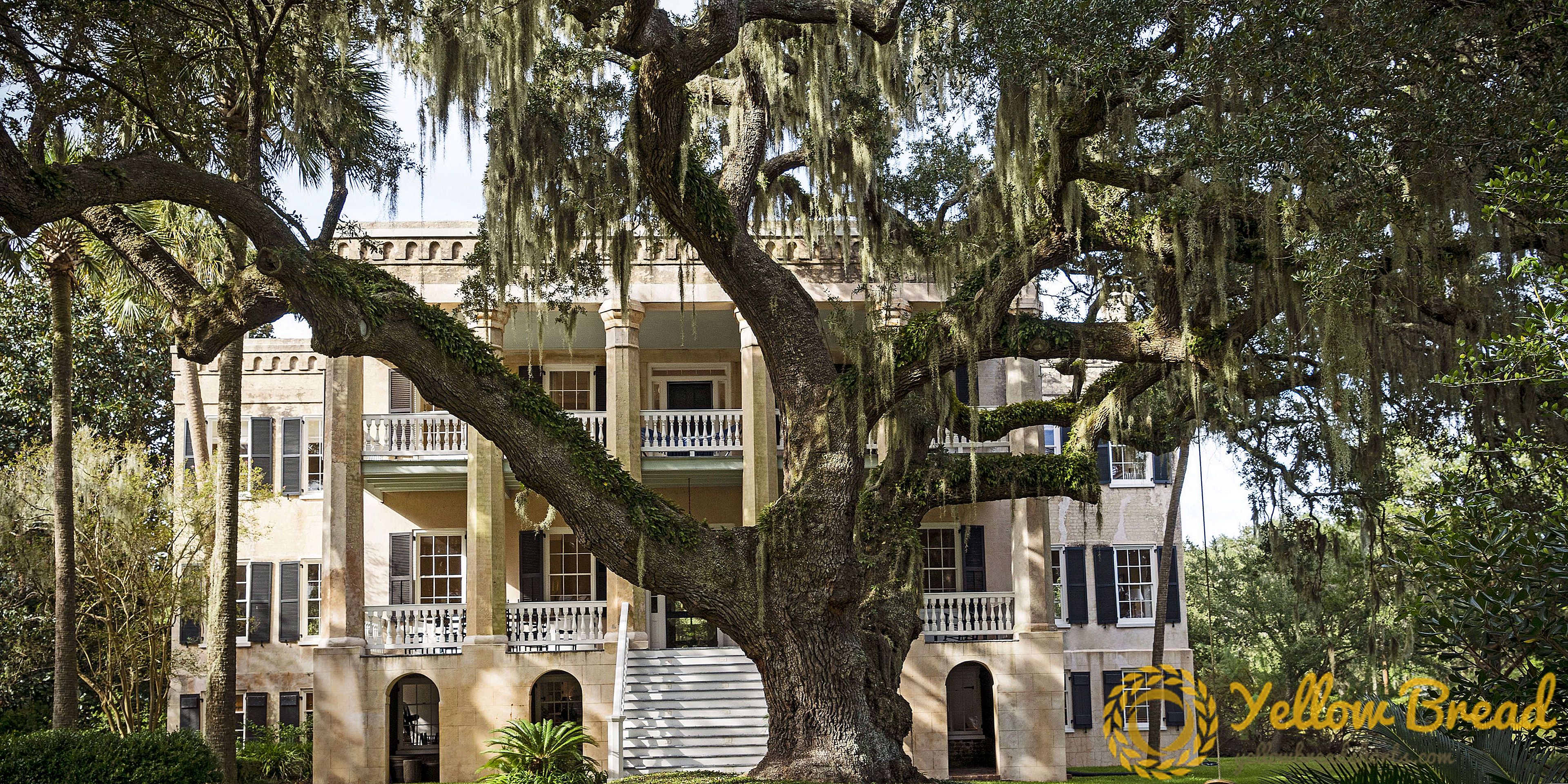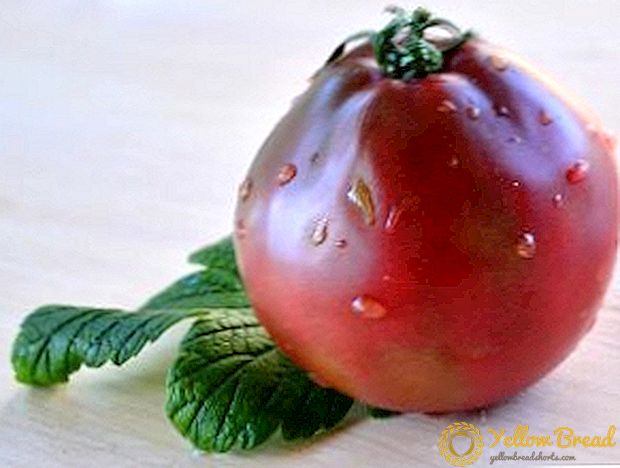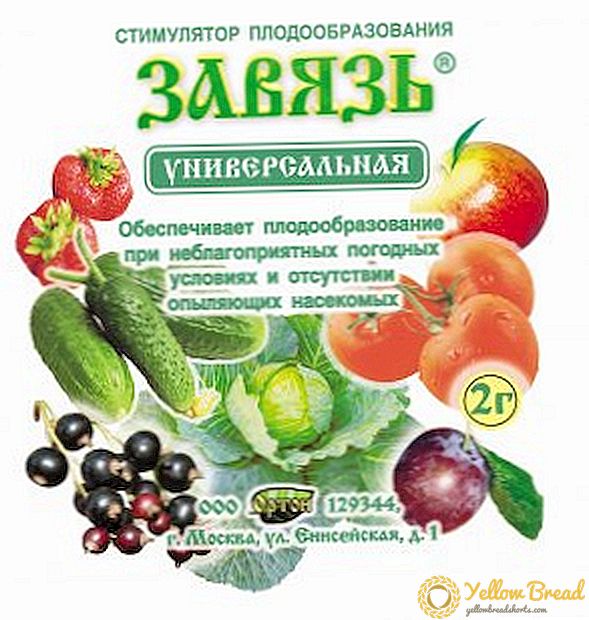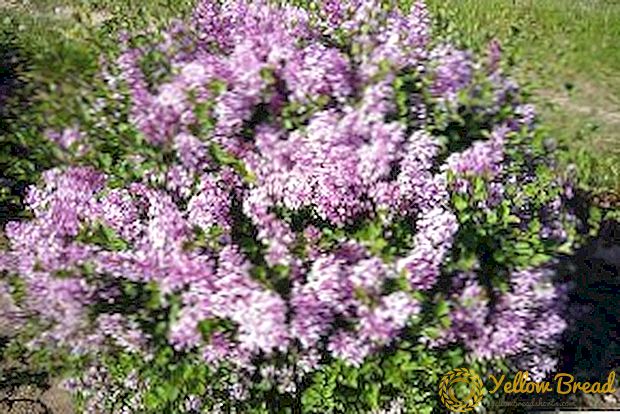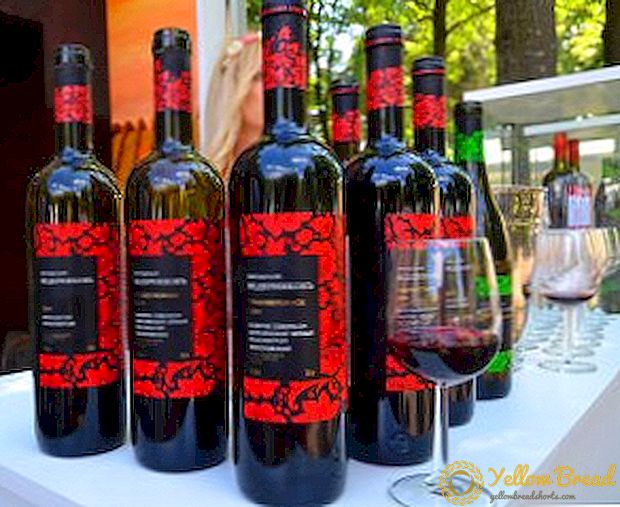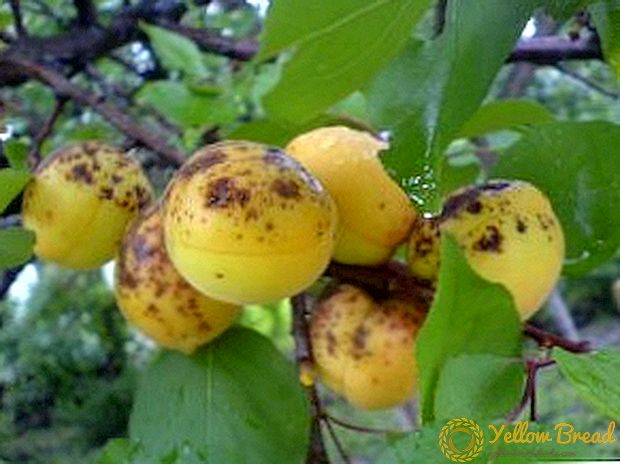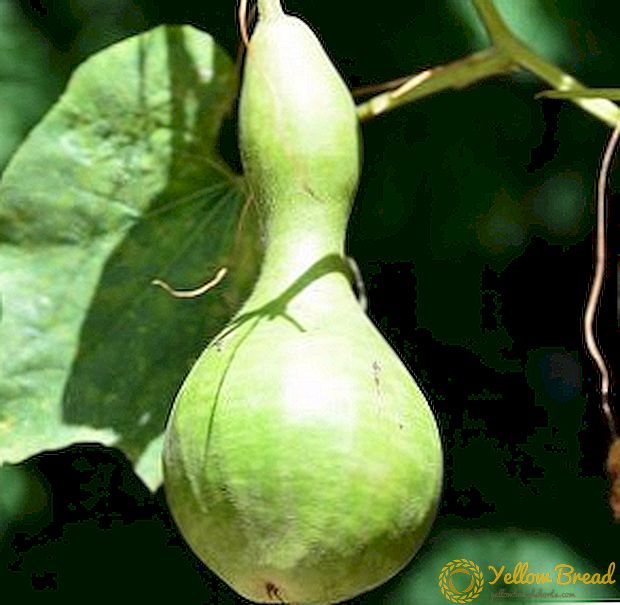 Today we will introduce you to Lagenariya. In this article you can not only read interesting information about varieties of lagenariya, but also see the species of strange plants in the photo.
Today we will introduce you to Lagenariya. In this article you can not only read interesting information about varieties of lagenariya, but also see the species of strange plants in the photo.
Lagenaria plant belongs to the Pumpkin family, as evidenced by the characteristic fruit of the culture. It is a lianoid plant that naturally grows in the tropics. Lagenariya is an annual creeping vine, the fruit of which is an ornamental pumpkin of various shapes and sizes (elongated, round, pear-shaped, etc.)
- "Goose in apples"
- Lagenariya "Serpentine"
- The Botles
- Lagenarius "Kalebasa"
- Lagenariya "Geese Swans"
- "Cylindrical"
- Lagenariya "Bulavovidnaya"
- "Cobra"
- Lagenariya "Polenovnaya"
- Lagenariya "Turban"
"Goose in apples"
If you have never seen this sort of lagenaria, you will not believe your eyes. The fruit of the plant is similar to a goose that has crouched down to pinch the grass. A fanciful gourd doesn’t have a white color to resemble a living bird from a distance.  The fruits of lagenarii are not only decorative value, but also quite suitable for human consumption. Thereby, you will not only surprise your neighbors and relatives, but also enjoy delicious porridges or pumpkin pancakes.
The fruits of lagenarii are not only decorative value, but also quite suitable for human consumption. Thereby, you will not only surprise your neighbors and relatives, but also enjoy delicious porridges or pumpkin pancakes.
If you like the pumpkin variety “Goose in apples” and you wanted to plant it in your plot, then we turn to a brief description. The seeds of the plant are soaked for a day in water and germinated at a temperature of + 22-25 ˚С. Transfer of seedlings to open ground is carried out in May and June. Plant culture can be both in the sun and in partial shade. When planting several bushes, maintain a distance of 40-50 cm so that the lagenarii are not crowded. Lagenaria begins to bear fruit on day 125 after sowing the seeds.
Now let's talk about the peculiarities of Lagenaria variety "Goose in apples". Ornamental plant has a high yield. From one bush can be collected about 8-10 pumpkins, the mass of which can reach 5-6 kg.
It should be noted good keeping pumpkin "Goose in apples"which without harm to taste or vitamin composition can persist until spring.
Lagenariya "Serpentine"
Serpentine Lagenaria is no different from the usual pumpkin.But only at first glance. After the appearance of the fruit, you will realize that this is a real ornamental plant. Pumpkins have an oblong shape and resemble elongated zucchini. At the same time, their length can reach 60-70 cm (fruits are collected for human consumption when they reach a length of 50 cm), and their weight is up to 7 kg.  The variety of creepers is interesting not only because it gives elongated and fairly weighty fruits, but also because it has the ability to regenerate damaged parts of the aboveground body. The plant grows up to 2 m in height, demanding on the light (shade or partial shade is not suitable) and moisture. Can be planted both in open ground and in containers on loggias or balconies. At the initial stage, the seeds are sown to obtain seedlings in April. Germinate seed need at a temperature of 25-30 ˚C. In open ground or larger containers lagenaria planted in early June.
The variety of creepers is interesting not only because it gives elongated and fairly weighty fruits, but also because it has the ability to regenerate damaged parts of the aboveground body. The plant grows up to 2 m in height, demanding on the light (shade or partial shade is not suitable) and moisture. Can be planted both in open ground and in containers on loggias or balconies. At the initial stage, the seeds are sown to obtain seedlings in April. Germinate seed need at a temperature of 25-30 ˚C. In open ground or larger containers lagenaria planted in early June.
The Botles
Lagenariya bottle got its name not only because of the shape of the fruit, but also because of the fact that before it made jars and various dishes.
It should be noted that this variety is rarely used as food, since the pulp has a peculiar taste, which not everyone likes. However, if you wait until the pumpkin is fully ripe and gently remove the insides, then you will have a large “bottle” that you can put in the kitchen as decoration or use as a container for water or juice.

Lagenaria shrubs of this variety can grow up to 3 m in length. The fruits themselves can reach 20-25 cm in diameter and up to 70 cm in length. An interesting feature of the variety "Bottles" is that if you cut off a part of the pumpkin, it will continue to grow further. Thus, you can come up with interesting forms for future decoration. When planting it is worth knowing that the vine is grown seedlings. Seeds are germinated and planted in boxes in April and then kept at a temperature not lower than 20 ° C until the end of May. In June, the plants dive into the open ground and provide the necessary support for the shoots. To get good pumpkins for crafts, it is better to plant a lagenariya near a wire fence or a support with a large area.
If you want to prepare a dish from a bottle gourd, then you need to collect the fruits when they reach 40-50 cm in length. It is worth noting that pumpkins contain a large amount of vitamin C, so the use of this product is especially useful in winter.
Lagenarius "Kalebasa"
The Calebasa Lagenarius is a pear-shaped pumpkin that resembles the Bottles Lagenaria. It is this variety that is most often planted for the further production of various jugs and bottles. If the shape of the "Bottles" had a wide top and bottom, then the pear-shaped fruit is more like the shape of the bottle we are used to. Growing this variety is similar to the previous ones. Since the seeds have a very hard peel, they must be soaked in water before planting. If you live in the southern regions, the landing can be carried out directly in open ground in May (when the ground warmed to a temperature of 15 15C). In a temperate climate, one cannot do without a seedling method.  The plant forms a pear-shaped fruit that can reach two meters in length. However, the standard sizes of pumpkins are 40-60 cm. The liana itself, with a good support, grows to 15 m.
The plant forms a pear-shaped fruit that can reach two meters in length. However, the standard sizes of pumpkins are 40-60 cm. The liana itself, with a good support, grows to 15 m.
It is worth remembering that the variety is picky about light and moisture, and the growing season is about 180-200 days.
Lagenariya "Geese Swans"
The variety Geese-swans lagenarii has its own story, which tells about the prince and princess, who were saved from the imprisonment of the swan geese. In retaliation, the evil queen turned the birds into pumpkins, while retaining their shape.
Many gardeners and florists confuse this variety and the variety "Goose in apples" because of the visual similarity. However, the vine itself is different and the structure of the leaves, and the length of the shoots.  The variety grows in length up to 1.5 meters, it is demanding of light and moisture (good watering and only a sunny place). The vegetation period of the lagenaria is 150-200 days.
The variety grows in length up to 1.5 meters, it is demanding of light and moisture (good watering and only a sunny place). The vegetation period of the lagenaria is 150-200 days.
An interesting feature of the formation of the fruit is that the pumpkins hanging in the air are obtained with straight “necks”, and those that are in contact with the surface get a curved upper part of the fruit.
You can plant a liana directly into the open ground, and you can grow seedlings. When grown from seed, the procedure is not molded from previous varieties. It is necessary to deepen the seeds no more than 3-4 cm into the ground. When replanting bushes in the garden, between them you need to leave about a meter of free space.
Dive seedlings in open ground need in late May - early June. Green fruits used in food are collected at the moment when they reach a length of 30 cm. The collection of fully ripened pumpkins falls in October.
"Cylindrical"
This is an elongated pumpkin that resembles the variety "Serpentine". At the same time, the fruits themselves have a different color and slightly differ in size. Cylindrical lagenaria when planting requires support, for which not too long shoots (about 15 cm) will cling to it. With proper planting and proper care, pumpkin fruits reach a length of 2 meters.
Another similarity with the serpentine liana is the regeneration of damaged or cut off parts of the fruit.  The cylindrical variety is demanding of light and moisture. The vegetation period is slightly longer and is 200 days.
The cylindrical variety is demanding of light and moisture. The vegetation period is slightly longer and is 200 days.
Most often, the vine is used for vertical gardening. Pumpkins are used to create dishes and various crafts, as well as for cooking. A fruit that has reached 40 cm in length can be used to preserve, pickle, or create salads.
Sowing on seedlings and further care is similar to a serpentine variety.
Lagenariya "Bulavovidnaya"
The variety got its name because of the interesting structure of the fruit, which looks like an inverted mace. The main difference between the fruit from the pear-shaped and "Botles" form is the very thin elongated upper part of the fruit, which, although it complicates the task of extracting the pulp from the pumpkin, but makes it possible to create an excellent vase or jug from the "club".  Liana has light green leaves, large white flowers, which from a distance resemble large bells. This variety is not distinguished by unpretentiousness and, like the other varieties of Lagenaria, it is demanding to heat and timely soil moistening.
Liana has light green leaves, large white flowers, which from a distance resemble large bells. This variety is not distinguished by unpretentiousness and, like the other varieties of Lagenaria, it is demanding to heat and timely soil moistening.
Claviform fruits have a length of from 25 to 200 cm. This difference in size is due to the climate and fertility of the soil. The variety has an extended vegetation period, which is 160-210 days, depending on air temperature and climatic zone. The fruits of this plant are more often used for decorative purposes than for cooking.
"Cobra"
Very rare variety of lagenaria, which is difficult to distinguish from the "Goose in apples." The most significant differences are increased thermophilicity (respectively, grown only by seedlings) and exoticism.
Distinguish from similar varieties can be on the "neck" of the fruit, which is slightly curved to the side, imitating the head of a cobra.  This variety is used not only in food or to create interesting crafts. Variety "Cobra" is distinguished by its healing properties. With this pumpkin, diseases of the digestive system, as well as diseases of the kidneys, cardiovascular system and obesity, are treated.
This variety is used not only in food or to create interesting crafts. Variety "Cobra" is distinguished by its healing properties. With this pumpkin, diseases of the digestive system, as well as diseases of the kidneys, cardiovascular system and obesity, are treated.
Lagenariya "Polenovnaya"
The variety of Polenoid lagenaria is easily confused with the usual zucchini at the initial stage of fetal development. Polenoid pumpkin boasts huge fruits that reach two meters and weigh up to 10 kg. It is difficult to believe that such a weighty pumpkin can be kept on such fragile shoots. However, pumpkin of this size grows only in the best conditions, the average length of the fruit will be at the level of 80 - 100 cm.
The plant bush is very branched, the leaves are large, slightly pubescent. Flowers are white, shaped like an open bell.  Sowing seeds on seedlings is identical to other varieties of lagenaria. However, it is worth remembering that when diving seedlings in open ground, you need to maintain the distance between crops (50 cm in a row and 70 cm between the rows).
Sowing seeds on seedlings is identical to other varieties of lagenaria. However, it is worth remembering that when diving seedlings in open ground, you need to maintain the distance between crops (50 cm in a row and 70 cm between the rows).
Polen-like pumpkin is used for cooking, decorating the courtyard or in floristics.
Lagenariya "Turban"
Pumpkin "Turkish turban" is fundamentally different from other varieties not only for its memorable shape, but also minimalism.
Let's start with the fact that the vine even before the formation of fruits will delight you with beautiful yellow flowers of large sizes and light green leaves that are spread out near the hedge, as if embracing it.
Pumpkin "Red Turban" produces very interesting talmous fruits that look like two small knitted pumpkins. The upper part of the fruit will always be painted in a brighter color, and the lower - in color close to white. If the previous varieties produced fruits of enormous size, then small pumpkins with a length of up to 30-40 cm grow on the Lagenaria "Turban".
Such minimalism allows the use of the fruit for the manufacture of interesting boxes and kitchen utensils. 
In order to grow an Eastern Turban pumpkin, it is necessary to sow seeds for seedlings in separate pots up to 10 cm in April. In June, seedlings are transferred to the open ground, keeping a distance of 30 cm between plants.
Small pumpkins ripen in September. For eating, they can already be torn off in the second half of August.

